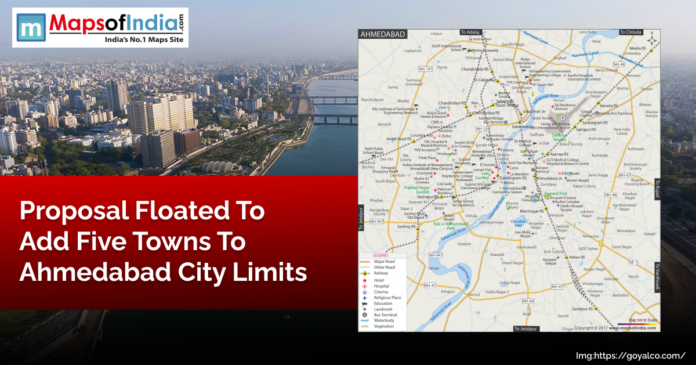There is a major proposal for an urban expansion that may cover Ahmedabad, whereby this will expand its boundaries to five adjacent towns. The idea is to incorporate the Sanand, Mehemdabad, Bareja, Kalol and Dahegam into the municipal territory of the Ahmedabad Municipal Corporation (AMC), which is one of the biggest integrations in the history of the city.
These towns under local control would be brought under the administration of AMC as per the proposal, and they are all now administered by other local bodies. It will improve coordination in the provision of civic amenities like water supply, sewage management, waste disposal, public transport and road infrastructure, whilst the move has promised to introduce uniform governance and centralized planning. The authorities feel that, not only would the merger cause the efficient management of urban centres, but it would also assist in carrying out massive development projects free of jurisdictional barriers.
In case it is passed, the expansion will play a pivotal role in growing the geographical boundaries and the number of people in Ahmedabad. With industrial hubs such as Sanand and Kalol, as well as fast-growing residential areas in Mehemdabad and Bareja, the economic status of this city should increase. Connectivity in the northern belt would be more effective with the addition of Dahegam, which may attract greater investment and infrastructure growth in the said area.
There are, however, speculations regarding the administrative and financial repercussions of such a grand-scale merger, too about the proposal. AMC would have to operate an extremely large area that might also necessitate more resources and staff, and larger facilities. The urban tax structure, the urban regulations, property taxes, as well as utility charges, may be revised by the inhabitants of the new proposed areas, as the municipal governance may transition to the new AMC structures instead of the small locals.
The first element is the timing of the proposal; that it has come before the municipal elections due to be held early next year has attracted attention, and some observers have posited that there could be, in this, an impact on the electoral dynamics. Political representation within the municipal corporation would also shift by incorporating these towns because this move may shift the balance of political power within the major wards.
The proposal is exciting and has elements of concern to the people of the five towns. On one hand, some people can be eager about the idea that with aggregation in place, the infrastructure will be stronger, the scope of the public services will grow, as well as the quality of the urban planning. Fear of higher taxes or the loss of local identity is what others have to concern themselves with. The stakeholder meetings and consultations with the population should also shape the ultimate form of the plan.
In case it is adopted, the immense growth may change the urban face of Ahmedabad in the forthcoming decades, combining the industrial, residential, and rural spheres into one metropolitan space that will have a more significant economic and strategic impact on the Gujarat state.










